Travel back in time in this UNESCO heritage city known for its colonial mining legacy
I didn’t know much about Sawahlunto before going. Just that it was small, tucked into the hills of West Sumatra, and used to be a coal mining town. That, and a few grainy photos online — old Dutch buildings, a narrow train track, something that looked like a museum.
It sounded quiet. And maybe a little haunted.
That’s what pulled me in.
The First Steps Through Stone and Fog
The road into Sawahlunto felt like descending into a memory. As if someone had paused the clock and left the town to settle in dust.
It was morning when I arrived. Mist clung to the hills like it didn’t want to leave. The air was heavy but still, and the streets were mostly empty. A few old men on bicycles. A woman sweeping in front of a faded colonial house. The sound of my footsteps felt loud.
I checked into a modest homestay just off the main road — wooden shutters, chipped floor tiles, no hot water. But it felt right. Like something in the town wouldn’t have made sense if I’d stayed somewhere modern.
Layers of Dust and Echoes at the Museum
I walked to the Gudang Ransum Museum, the old public kitchen that once fed hundreds of mine workers a day. The building still smelled faintly of ash and old metal. Inside were rusted pots so large I could’ve climbed inside one. Bent ladles. A faded menu nailed to a wall, written in Dutch and Bahasa.
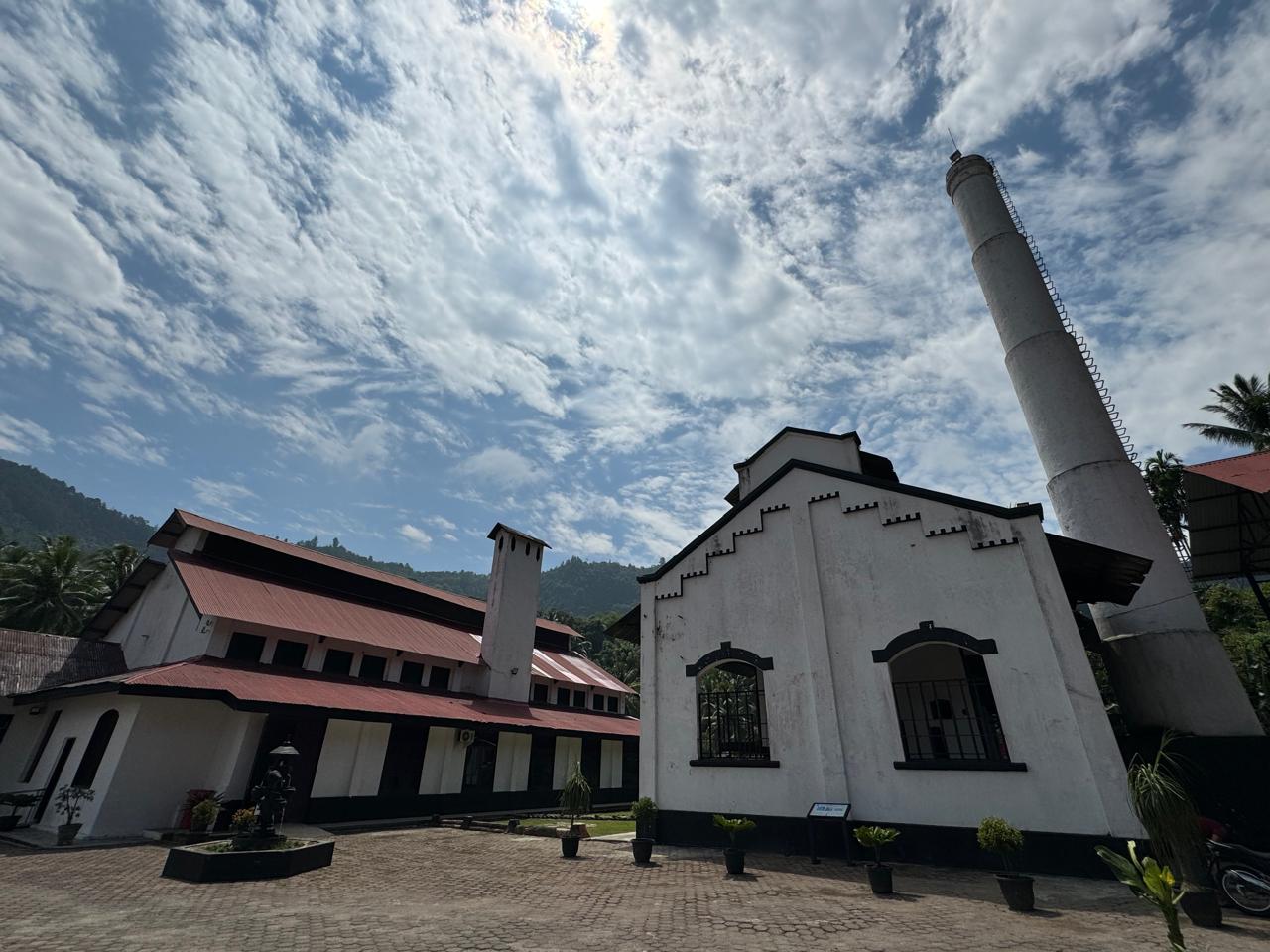
No guided tour. Just quiet halls and glass cases full of worn shoes, old ration cards, and black-and-white photos of tired eyes and straight backs.
In one room, a recording played — the sound of coal shovels scraping against stone. I stood there listening, eyes closed. It was oddly calming. Then eerie. Then quiet again.
That was the rhythm of Sawahlunto — a place where even silence carries weight.
Lunch With Locals, and a Bit of Laughter
For lunch, I followed the smell of garlic and frying oil to a warung near the old railway.
A man in his fifties stood behind the counter, chopping shallots while humming something that might’ve been a dangdut song. I ordered nasi goreng and sat near a window that faced the tracks.
He asked where I was from, then laughed when I said Jakarta.
“Ah, kota besar… cepat panas, cepat marah,” he said, handing me a glass of warm tea.
The fried rice was smoky and just a little too oily — but exactly what I needed. The sambal was strong enough to make my nose run. I let it.
Walking the Tracks
Later in the day, I walked the old railway that once carried coal out of the valley. The tracks don’t lead anywhere anymore — just stop in the grass like they got tired halfway through the job.
I stepped over bolts and broken wood. Weeds pushed through the metal like time had forgotten to finish the erasure.
I passed a small railway shed, its roof sagging, walls covered in graffiti. A group of teenagers sat on a bench smoking kretek cigarettes and watching a chicken peck at an empty chip bag.
They didn’t say anything to me. Just nodded. I nodded back.
It felt like the right kind of interaction — nothing forced, nothing performed.
The Tunnel That Swallowed Light
In the afternoon, I visited the old mining shaft — Lubang Tambang Mbah Soero. It’s one of the original coal tunnels, now open for visitors, though you still have to wear a helmet and duck a little at the entrance.
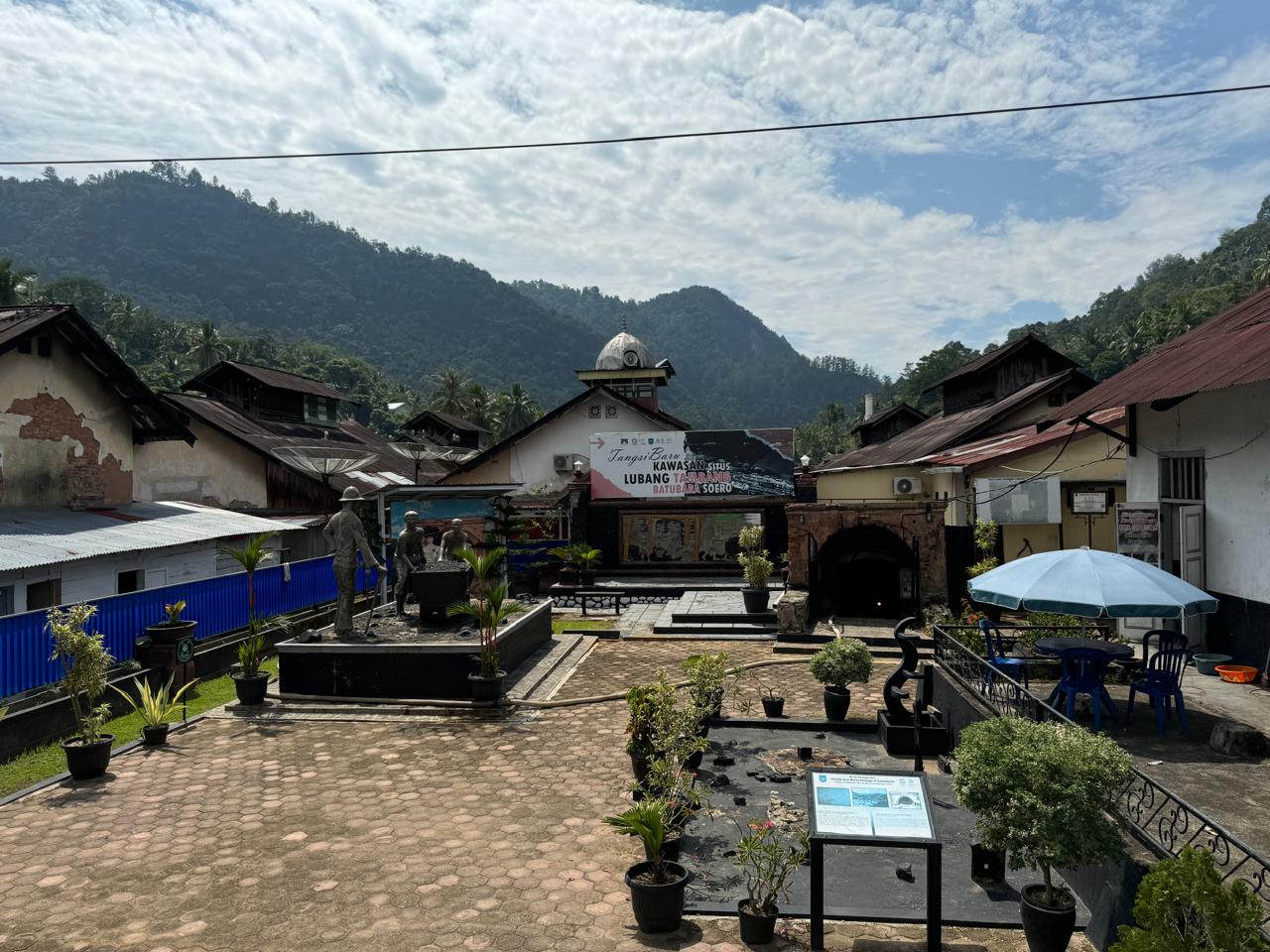
There was no fanfare, just a quiet guide with a flashlight and a few warnings: don’t stray, don’t run, and if you feel dizzy, speak up.
Inside, the air turned damp almost immediately. The light thinned out. You could hear water dripping from somewhere deep in the rock. The walls were close — not in a claustrophobic way exactly, but close enough to remind you that this was a place made by men with pickaxes and lungs full of coal dust.
I reached out and touched the tunnel wall. Cold. Wet. Rough like pumice. There was something sobering about it — knowing people used to work entire shifts down there with barely any light, just the sound of tools and breath and darkness.
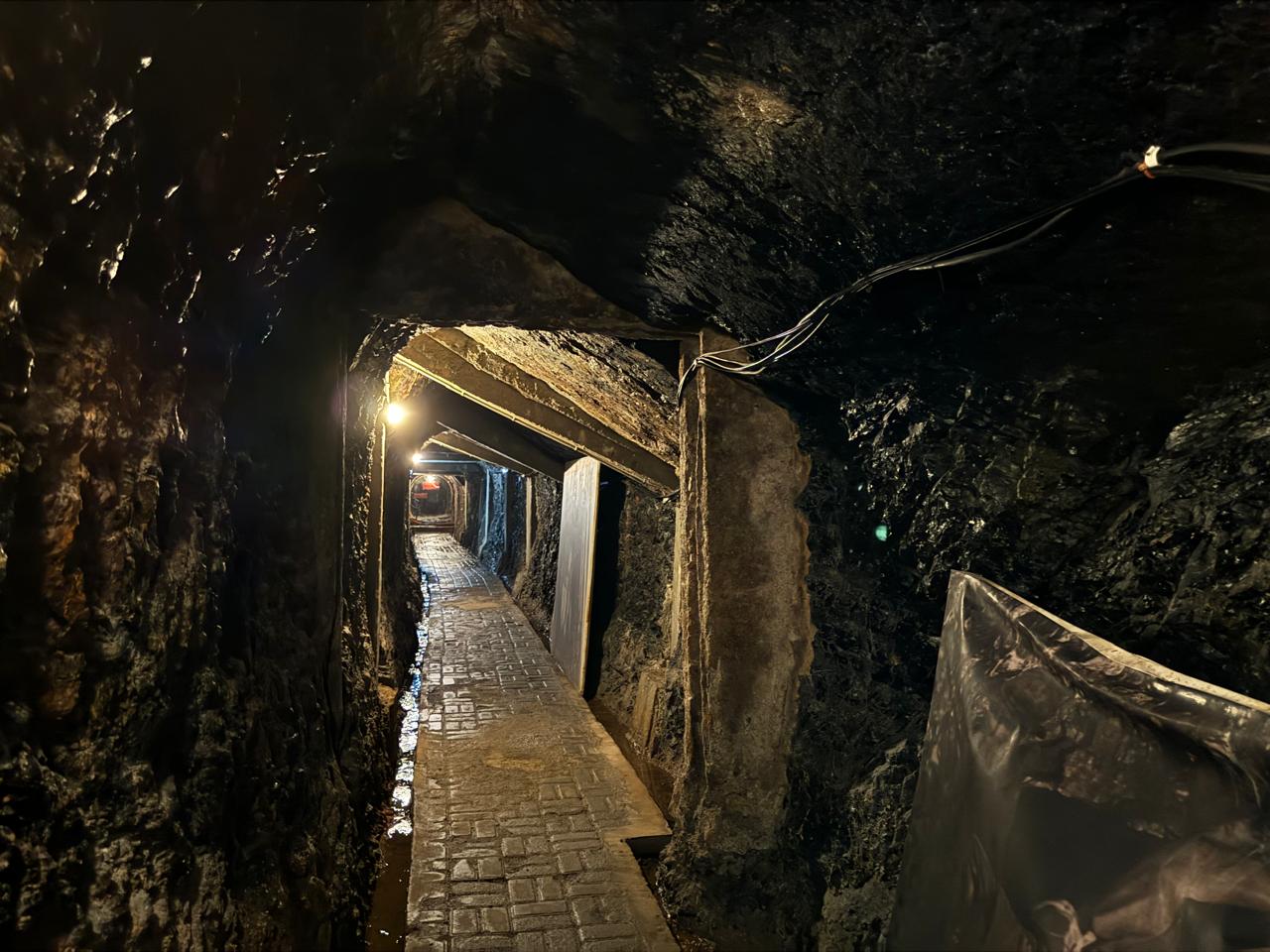
I didn’t stay long.
A Square Without Rush
That evening, I wandered back into the town square. Sawahlunto doesn’t really have a central plaza in the European sense, but there’s a patch near the old clock tower where kids ride bikes and old men sit smoking kretek on benches that wobble slightly when you sit down.
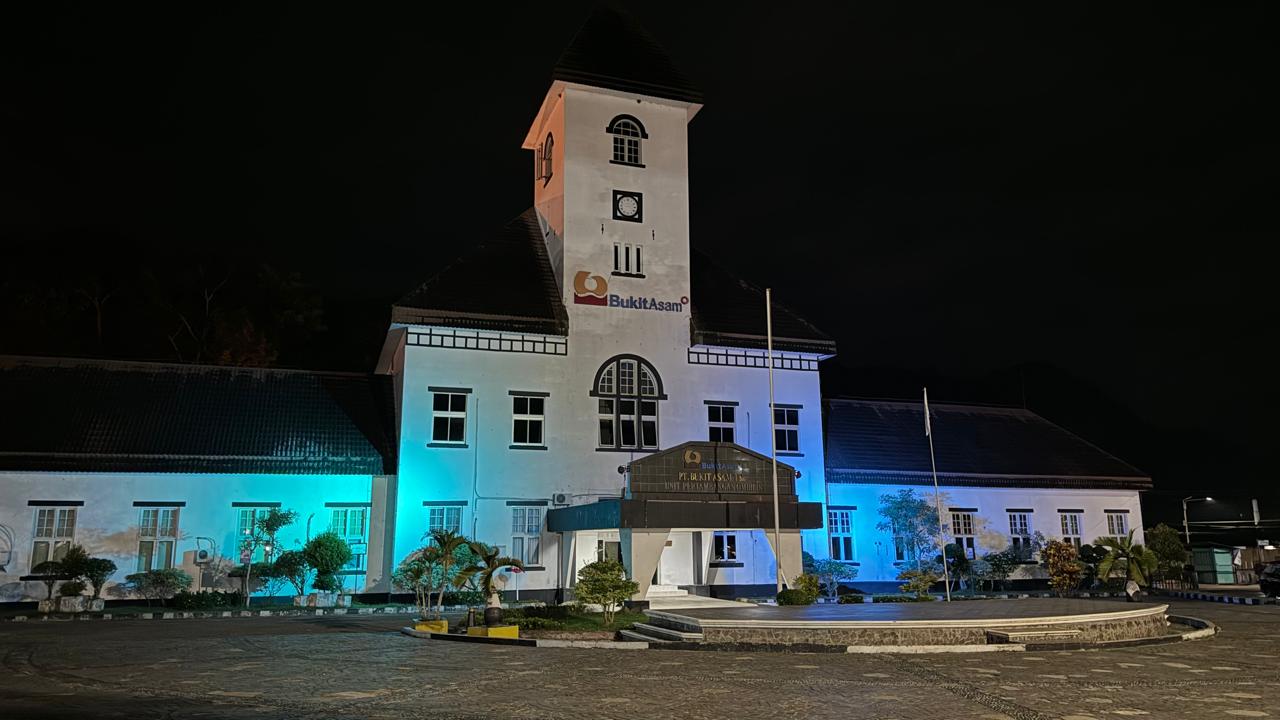
There was a small stage, maybe used for community events, but tonight it stood empty. Someone had hung red-and-white flags between trees. A girl was selling balloons from a basket.
I bought es cendol from a teenager with headphones in. He didn’t look up much. Just took the money and kept bobbing his head to a song I couldn’t hear. I sat by the clock tower, drinking slowly, the taste of palm sugar and coconut milk lingering longer than expected.
The square wasn’t trying to entertain anyone. It just was.
The Ghost of a Whistle
That night, I stayed near the railway again. Around 3 a.m., I woke up to a sound — soft, distant, like a train whistle. But there were no trains anymore. Just echoes, maybe. Or maybe just my mind filling in the blanks.
I lay there in the dark, listening.
Even the quiet had character here. It wasn’t empty. It was full of things no one talks about anymore — coal dust in the lungs, stories lost in the tunnels, laughter by the fire after a shift underground.

In Sawahlunto, the past doesn’t haunt you. It just sits beside you. Quiet. Present. Solid like the stones in the road.
What Stayed With Me
I left Sawahlunto early the next morning. The air was colder than I expected, and the sky hung low with that soft gray light you only get in the hills.
As the car climbed out of the valley, I looked back one more time.
No grand landmarks. No dramatic sendoff.
Just quiet rooftops, still mist, and that same narrow road folding back into the past.
Sawahlunto isn’t the kind of place you visit for thrills. It’s the kind of place that leaves a quiet mark — coal under your nails, dust in your mind, and a memory that feels heavier than it should.
I didn’t take many photos.
Some places don’t need proof. Just presence.

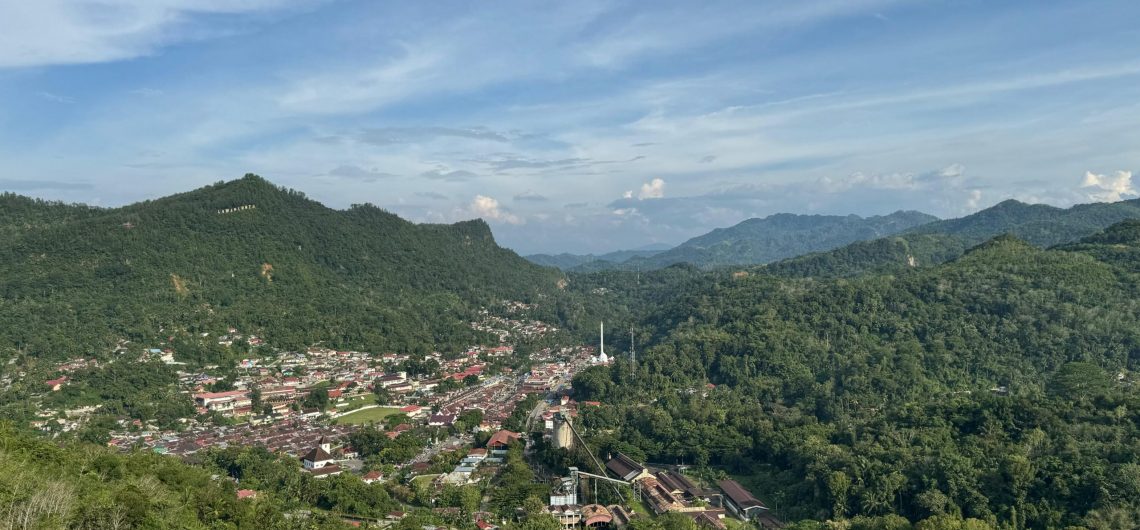
Comments